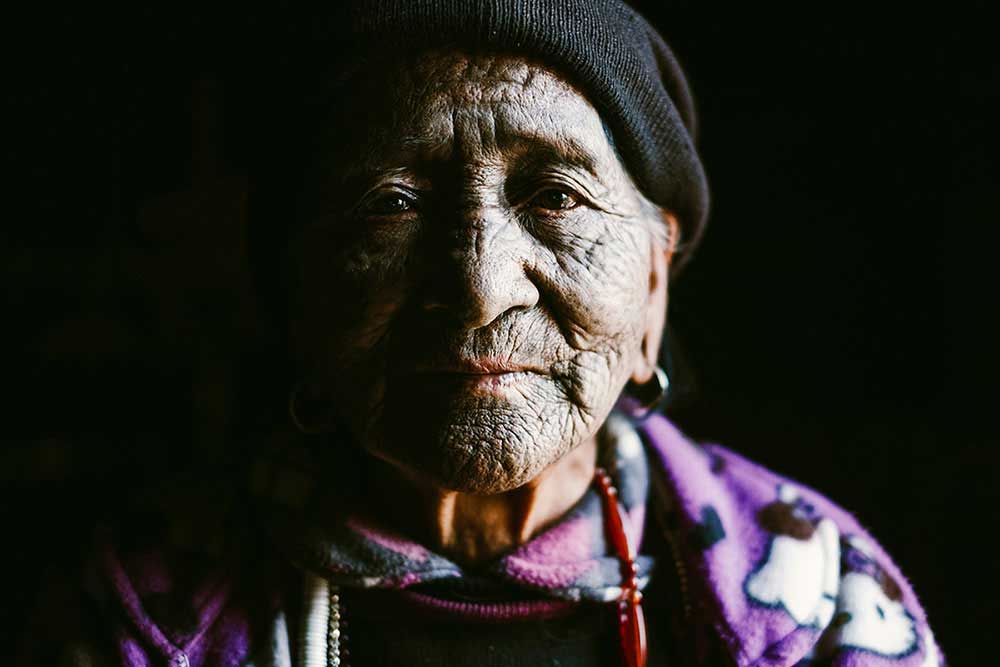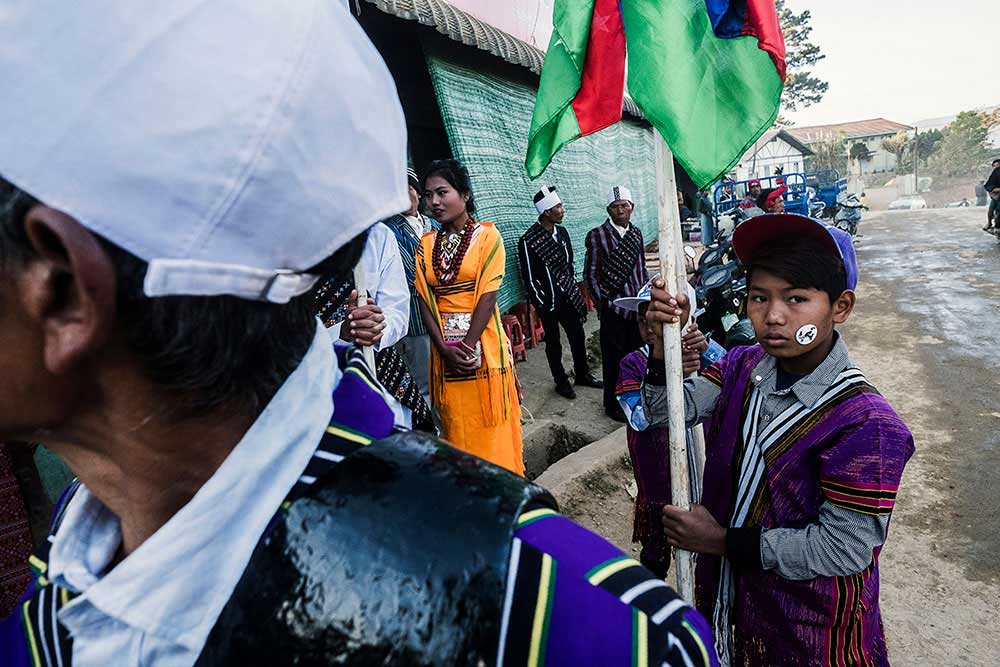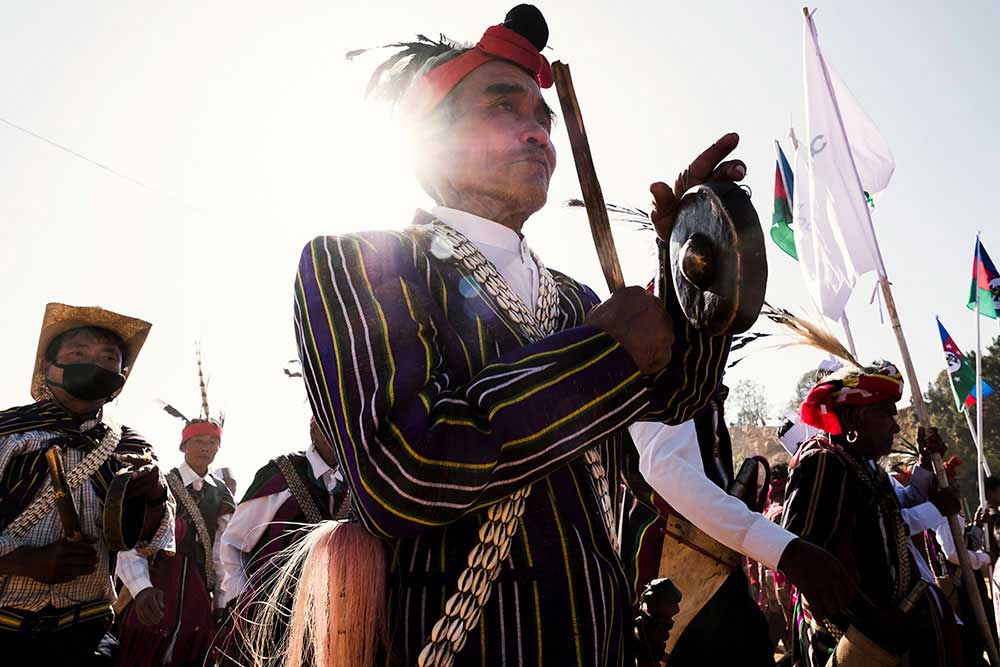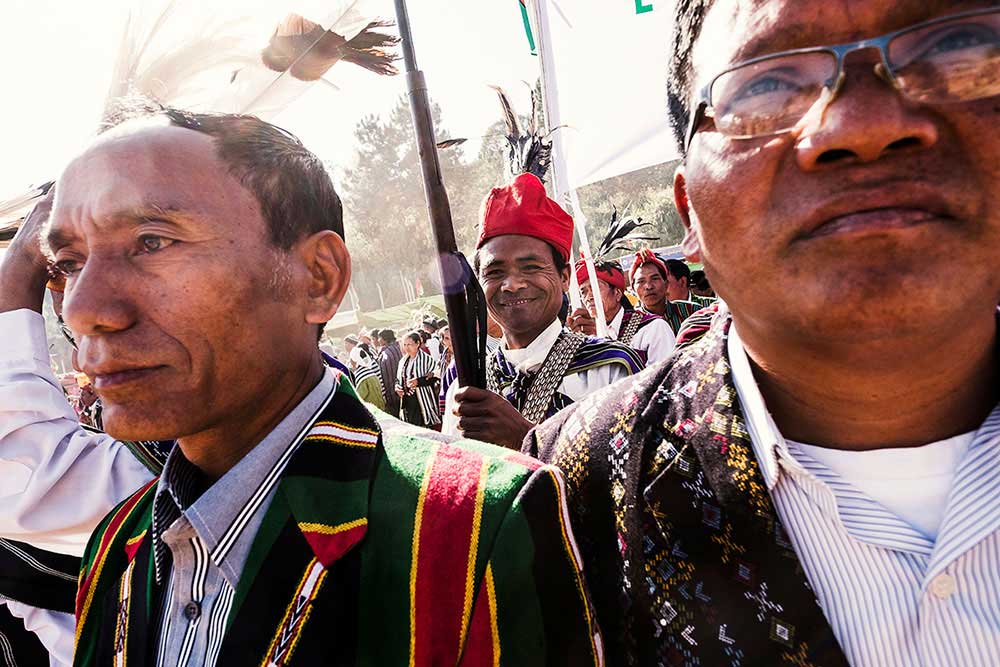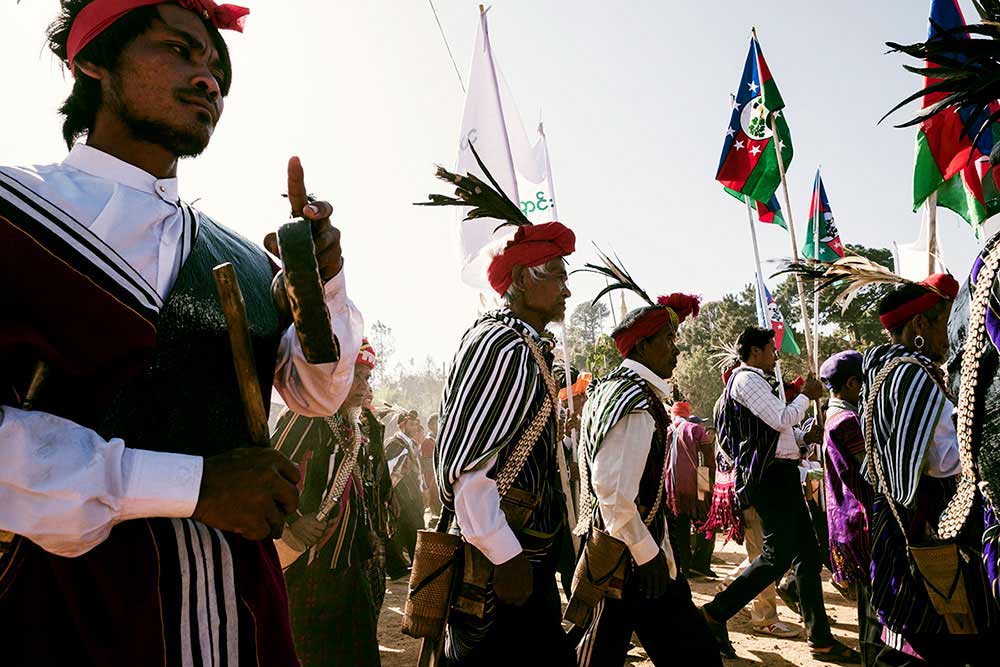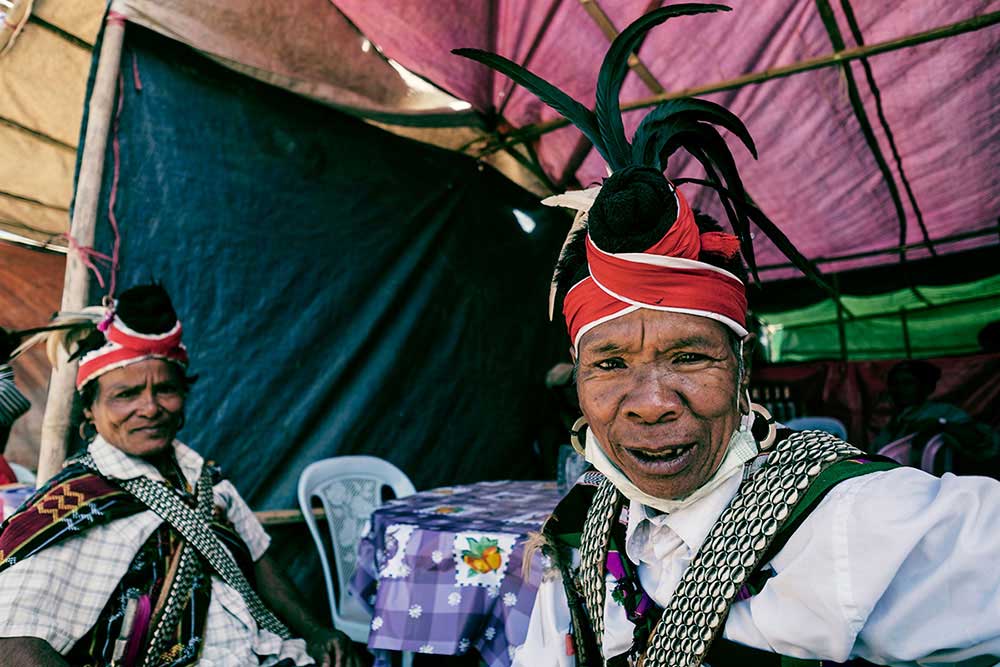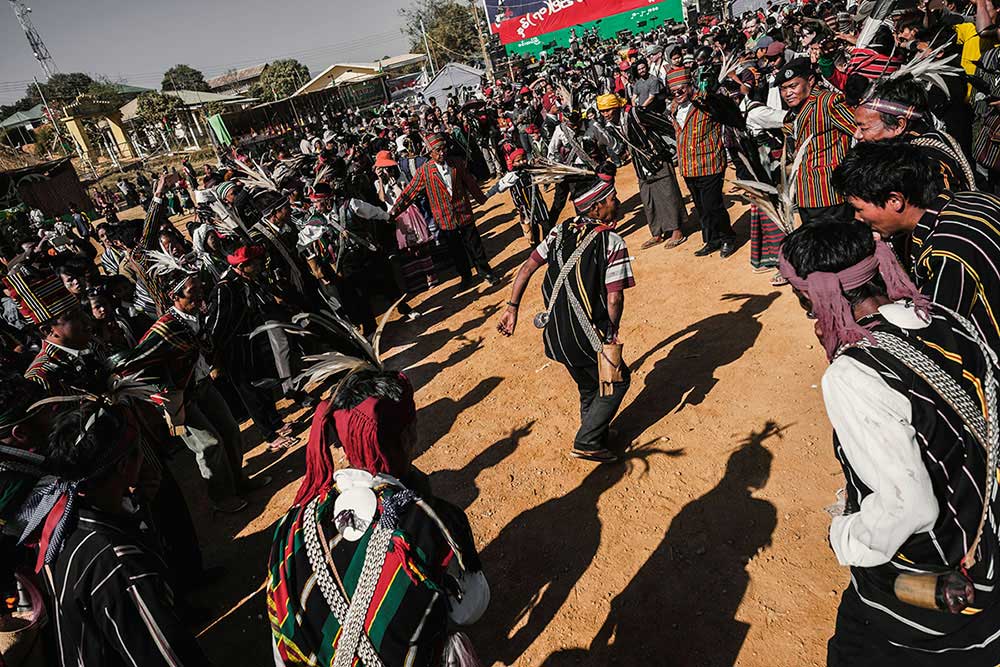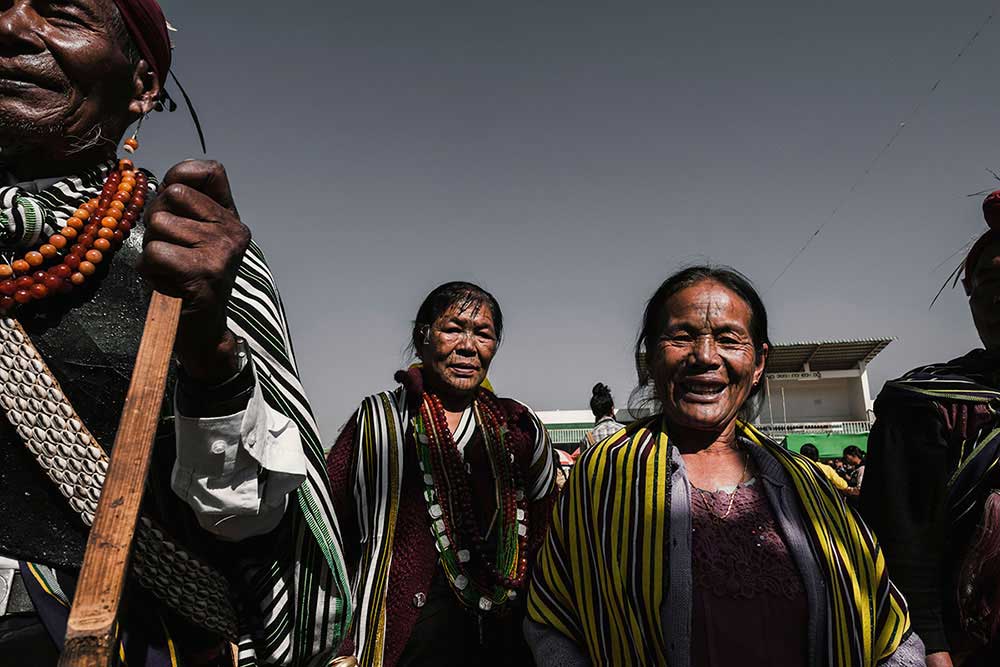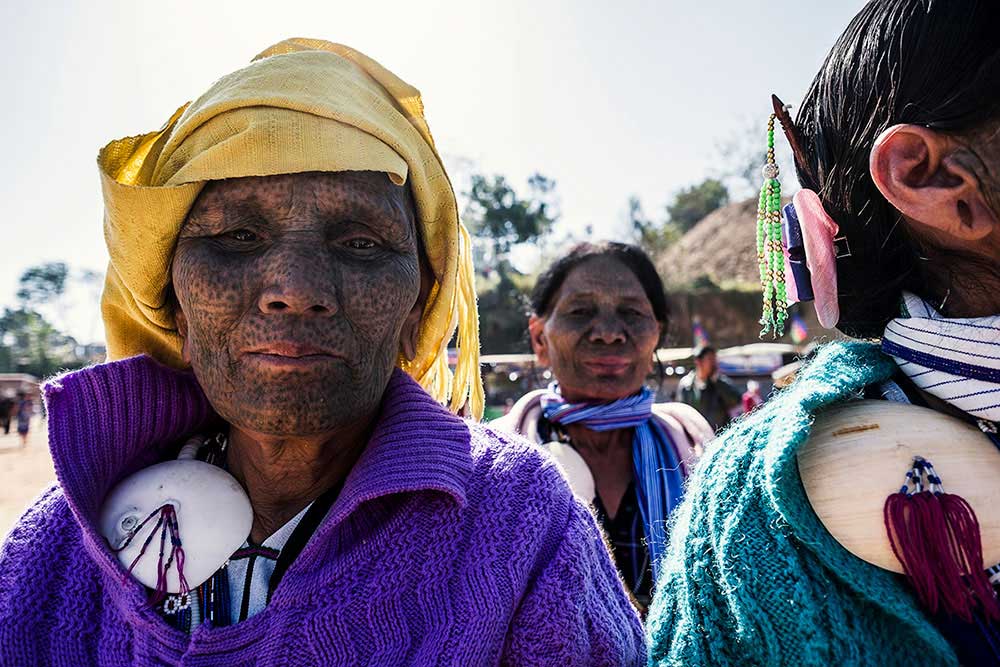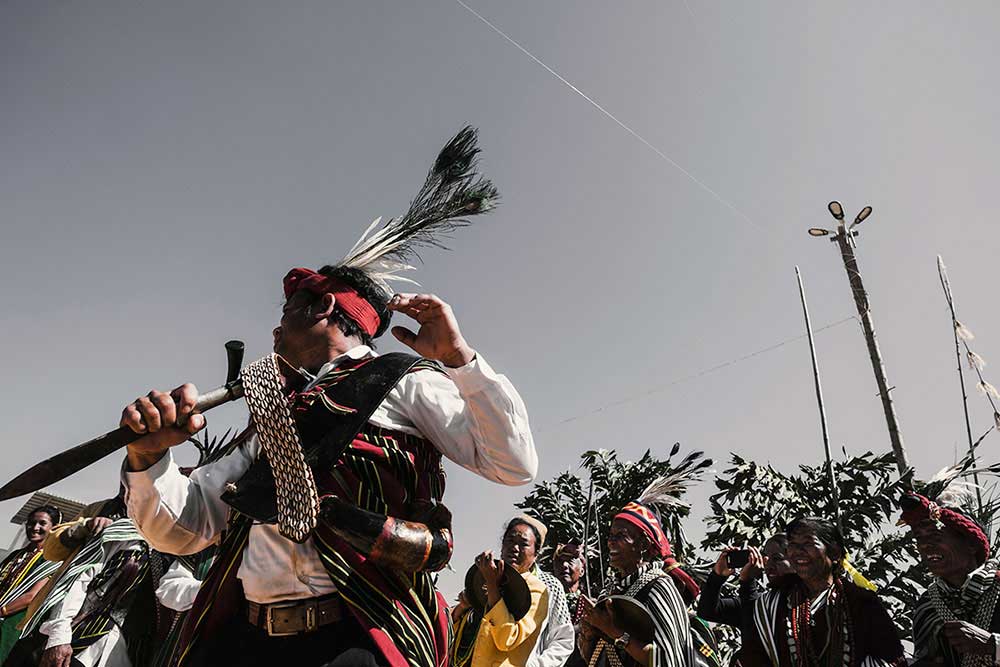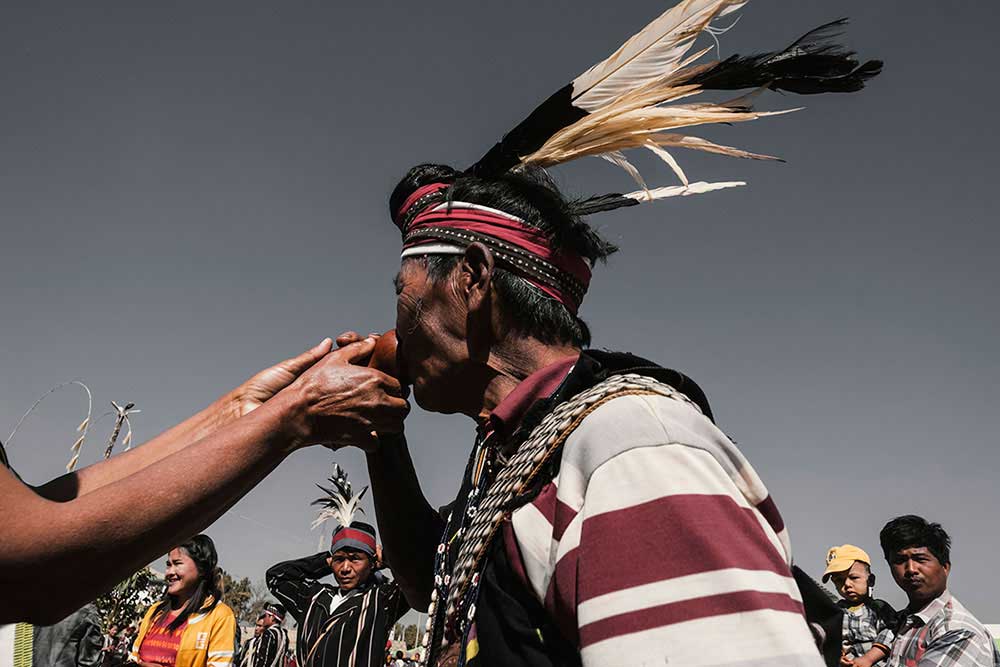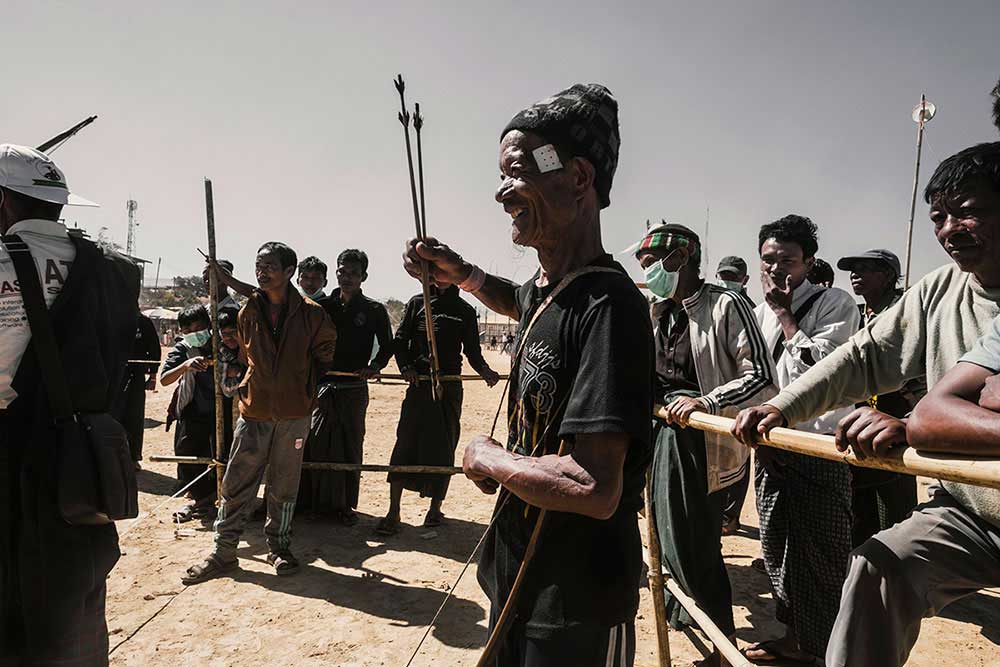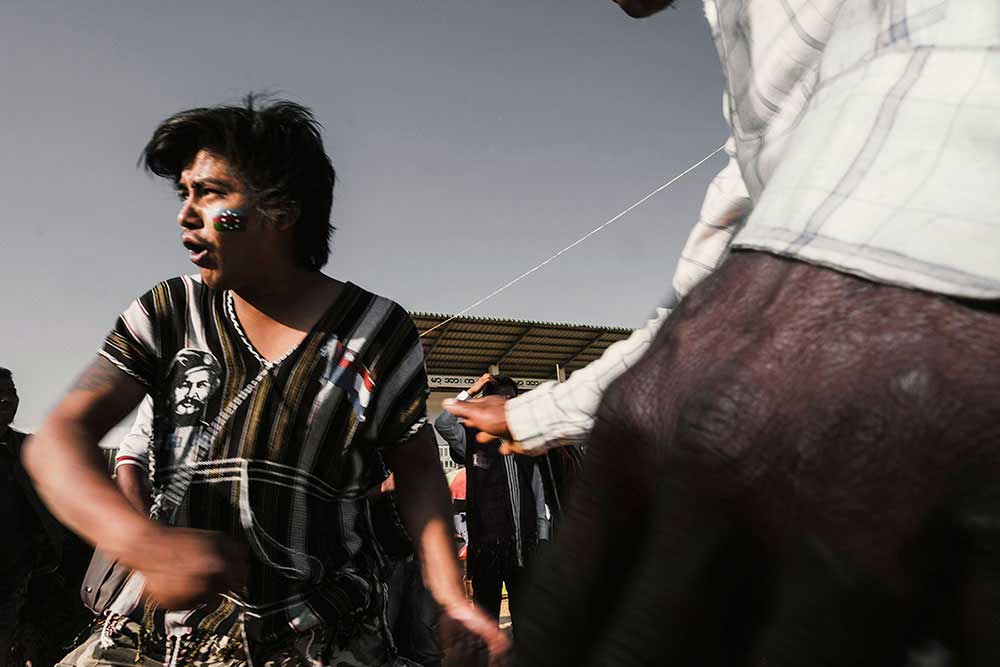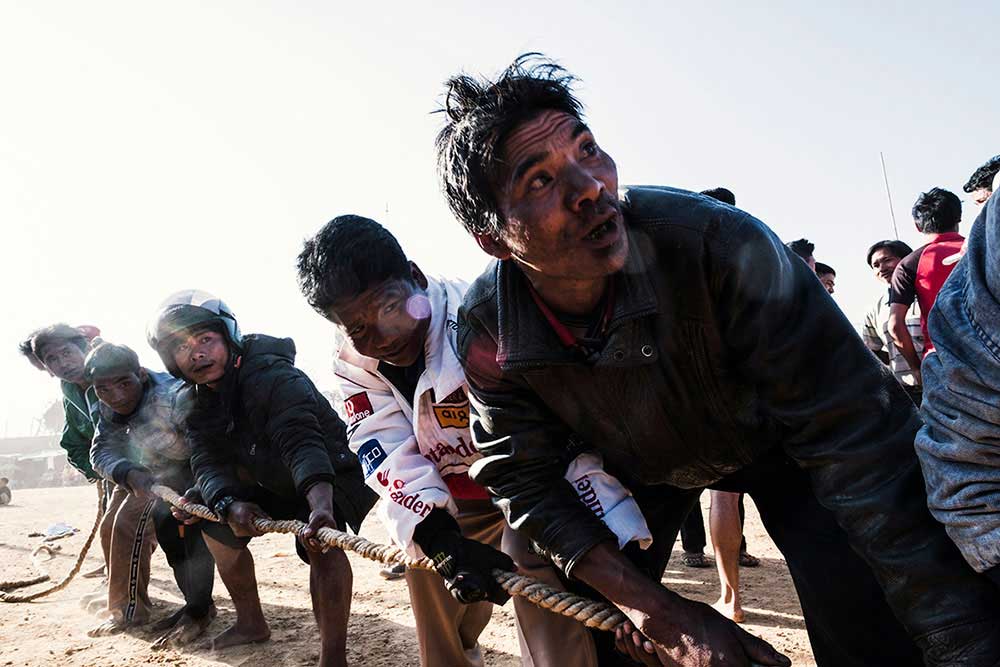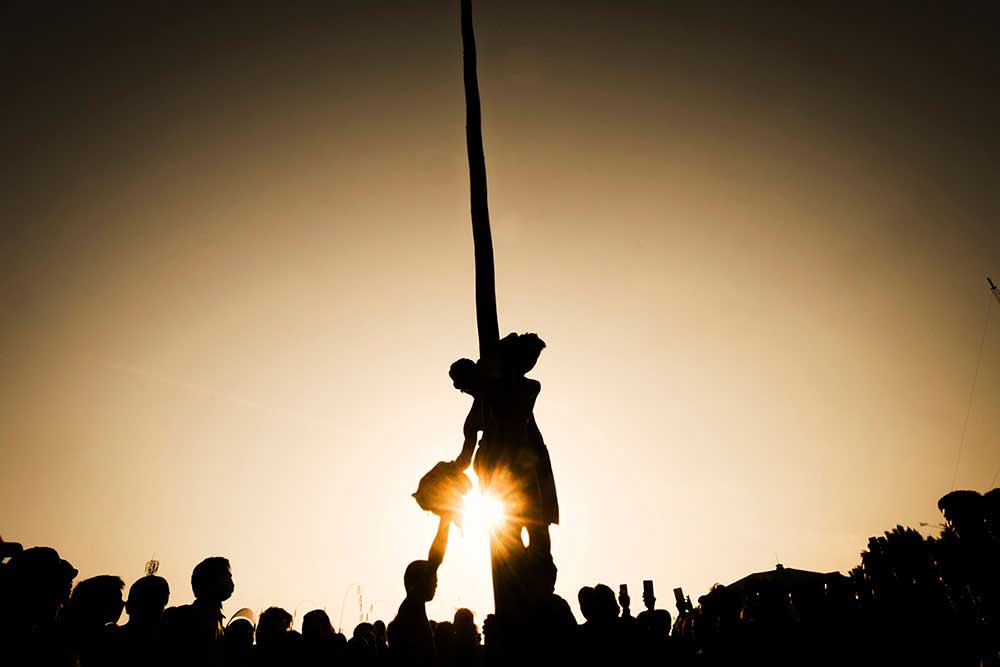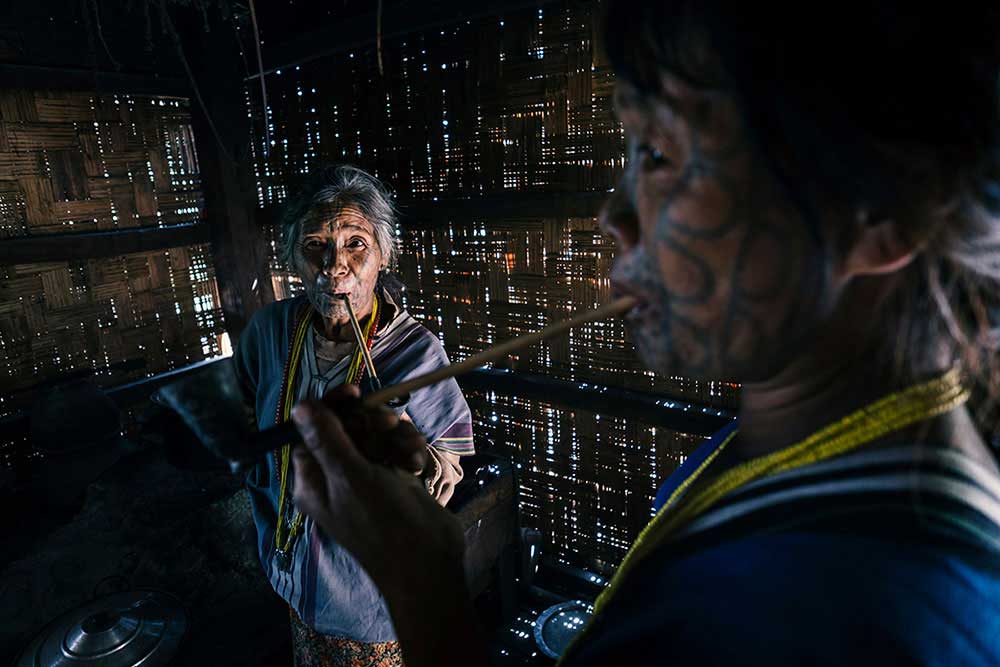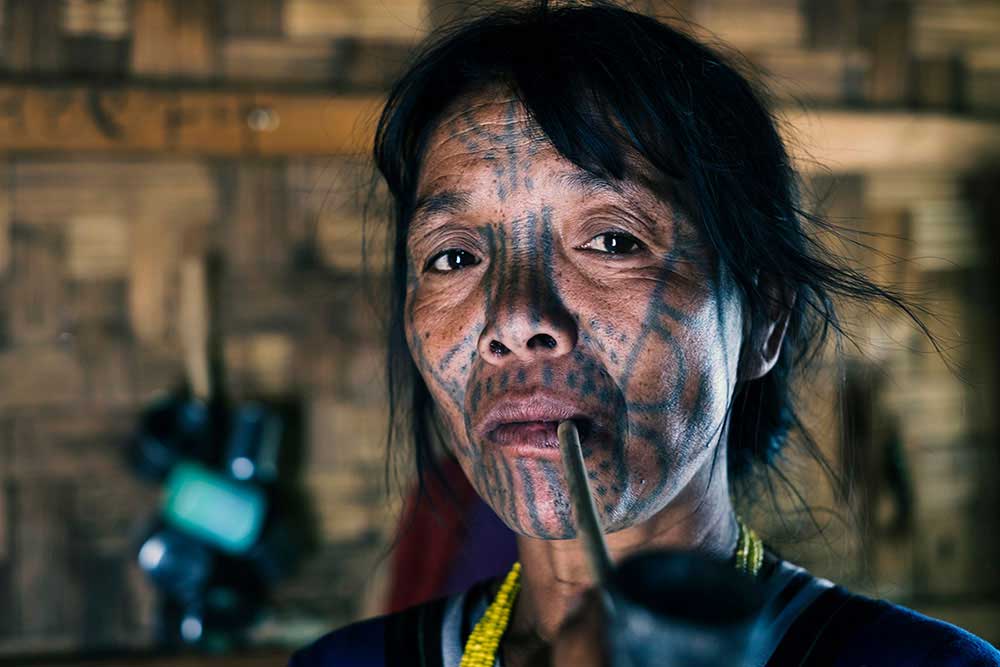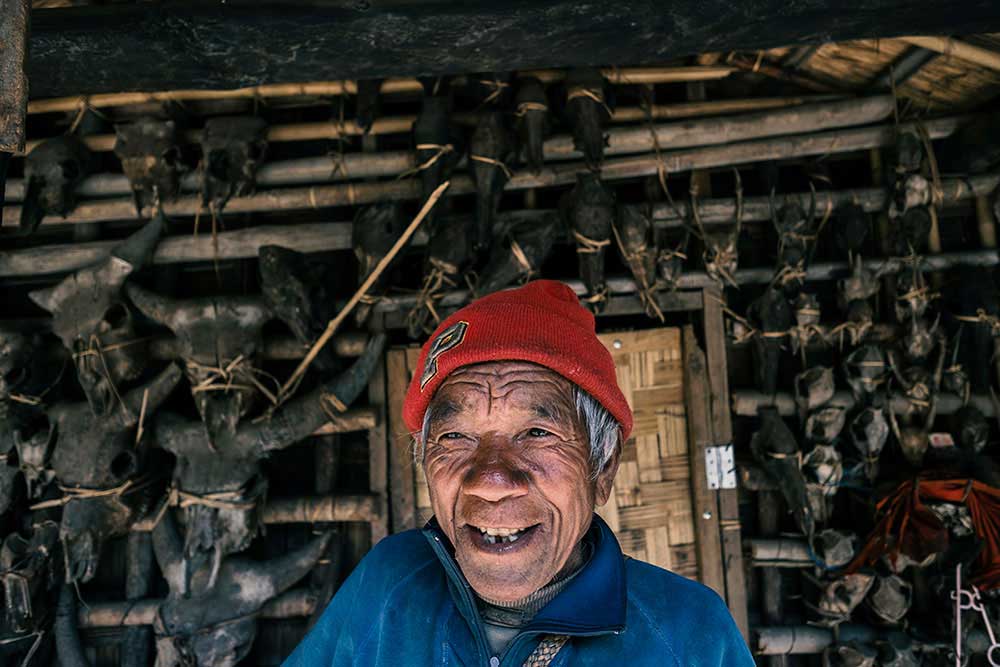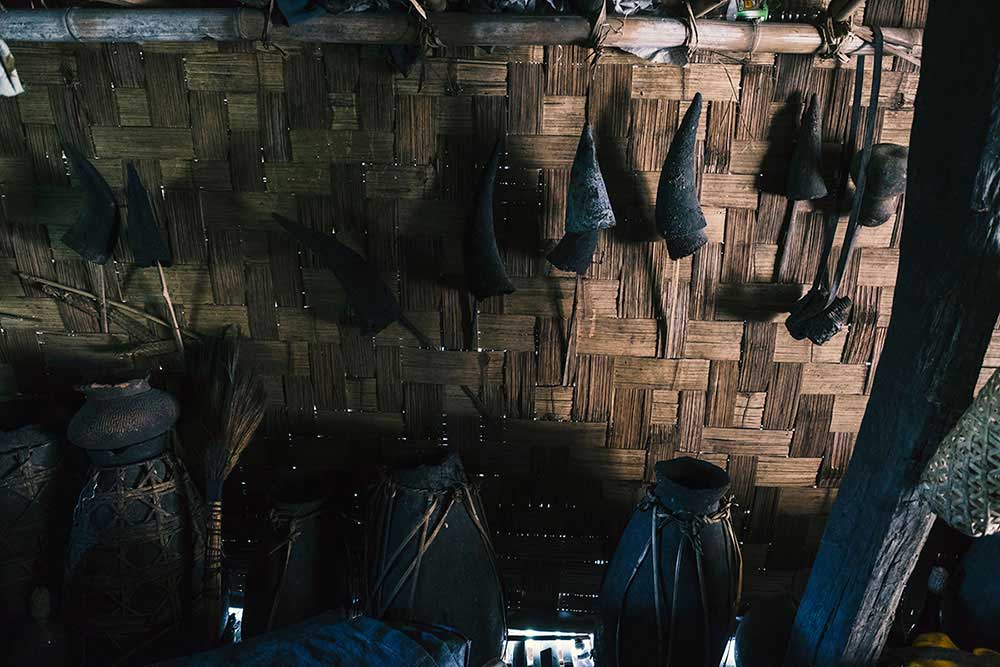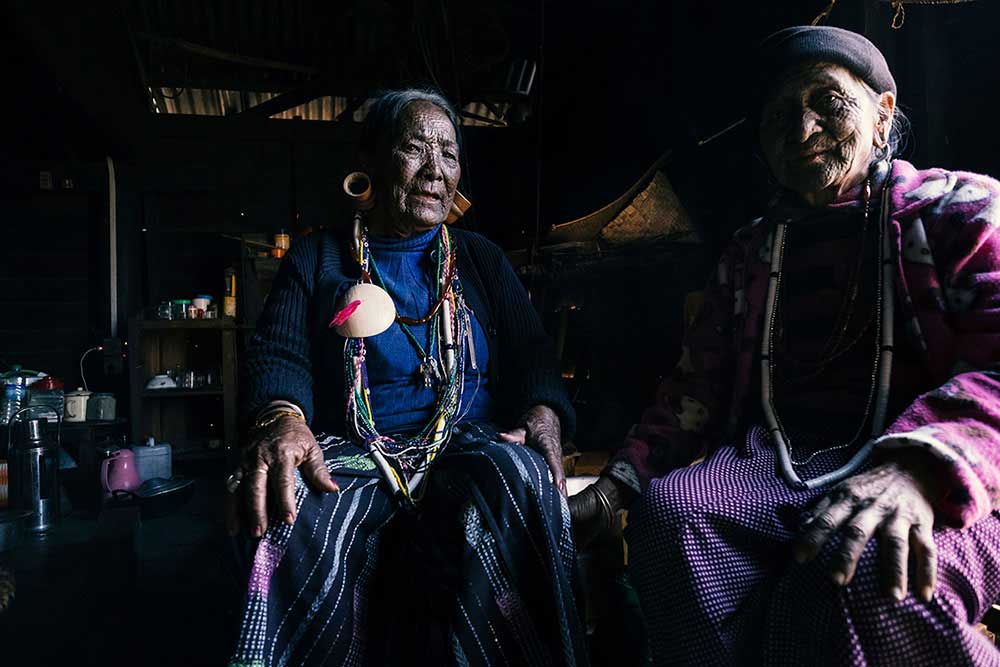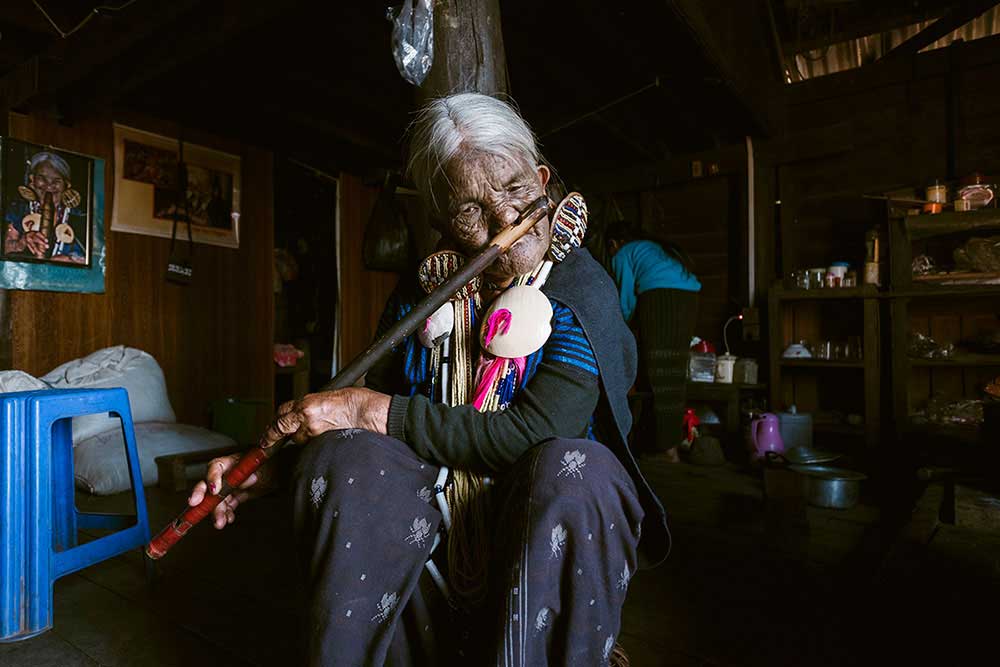The mountainous Chin state in the mid-1500s was conquered by the Burmese and at the end of the 1800s by the British, gaining independence only in late 1974.
Its capital Hakha, along with places like Mindat, and Mount Victoria itself, are the beating heart of the state, making it a landscape characterized by mountain chains, verdant hills and sandy stretches, where the few roads and road networks begin to become space to increase tourism, tourism which was not allowed to enter until about a decade ago, always maintaining some limitations for obvious reasons.
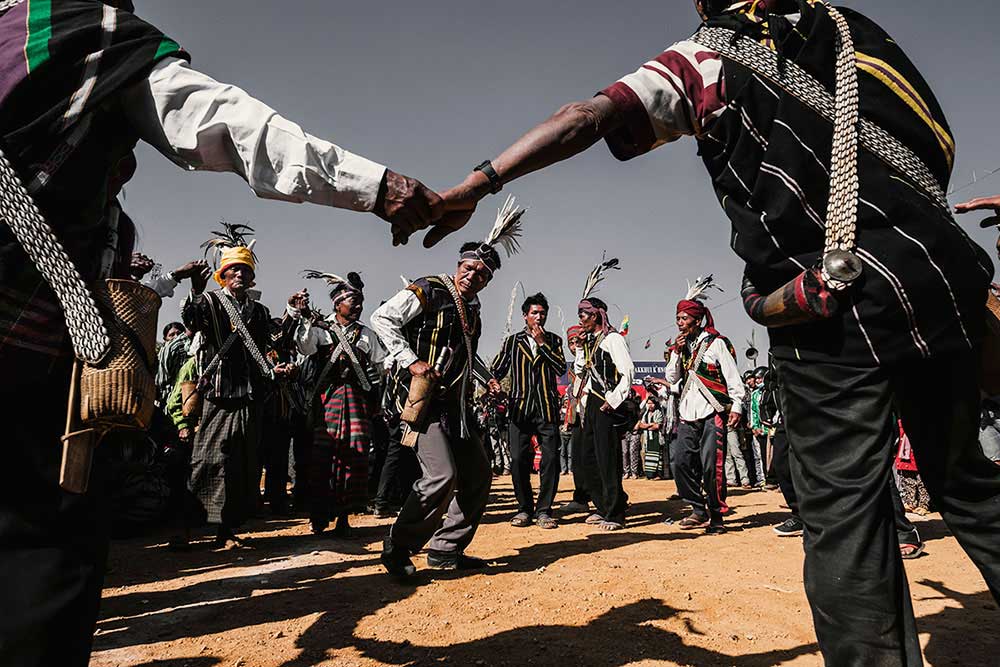
It’s inhabited by the Chin, a Burmese-Tibetan people who had once migrated from China to become animists, people who became shamans and are credited with divine or supernatural qualities. This degree of identification between the spiritual principle (soul) and the material aspect leads them to perform rituals sacrificing animals, who honoring the birth of the male child by subsequently hanging the animal’s head on the door of the house and burning the bones, placed later in a stone cemetery. Still, a good 70% of the population is Christian due to a history of preaching by Baptist missionaries. Their isolation saved them from the medieval dominations of Bagan or from other kingdoms but not to the consequent action by the people to protect the Chin women by resorting to the use of the tattoo to disfigure their beauty. In fact, it was customary for the royals to marry anyone they wanted at any time, out of pure whim. The Chin women were considered beautiful and therefore desired by the princes. Those tattoos, consequently, drawn on the faces of the girls between 11 and 15 years triggered the opposite effect. Those same tattoos become to all effects the distinctive signs of beauty for every Chin woman of the old generation thus determining tribe and provenance of the village: the Munn women have their faces tattooed by a series of interlinked rings depicting half moons that depart from the cheeks and go down the neck; Dine women have their faces occupied by hundreds of small points; while the tattoo on the faces of Makan’s women looks more like a spider web. This practice is no longer in use, was subsequently abolished by the Burmese government since 1961 and is now on its way to extinction.
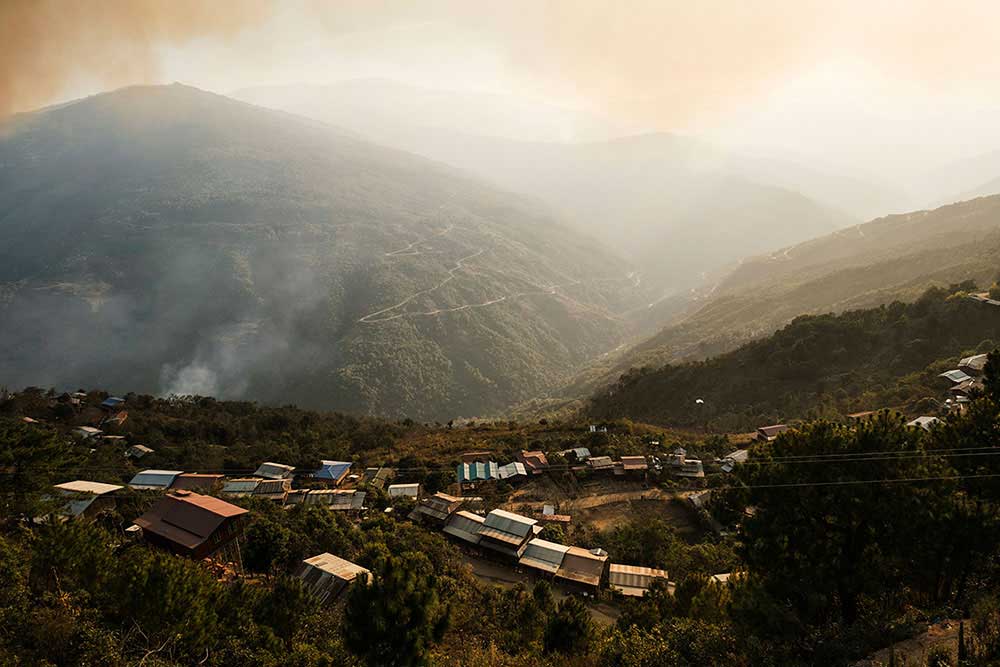
Every year, on February 20, the Chin state commemorates the 1948 event, when the Chin State General Assembly was held in Falam. At the meeting, 5,000 representatives voted to overturn their traditional feudal system and thus adopt democracy to elect local and state leaders. So February 20 is marked as the day when the political power in the Chin state was handed over by the sovereigns to the people, it is the day when the people finally enjoyed freedom.
Party where you can see everything. Women, old people, children, men all united to celebrate, to honor their representatives. The same gentlemen who came on stage sing the pride, the continuity of the Chin culture, education and health improvements. A row of girls dressed in multicolored longy braided in the bright stripes of the Chin crossed by sparkling silver threads take part timidly in the parade. For children the same with the difference that they have a double belt of tight leather at the waist that holds the longyi and at the same time provides a sheath for the traditional Chin wide blade knife. Men are no different: a shells bandolier (worn by the soldiers) who go around their backs and the eagle feathers sprout as headgear.
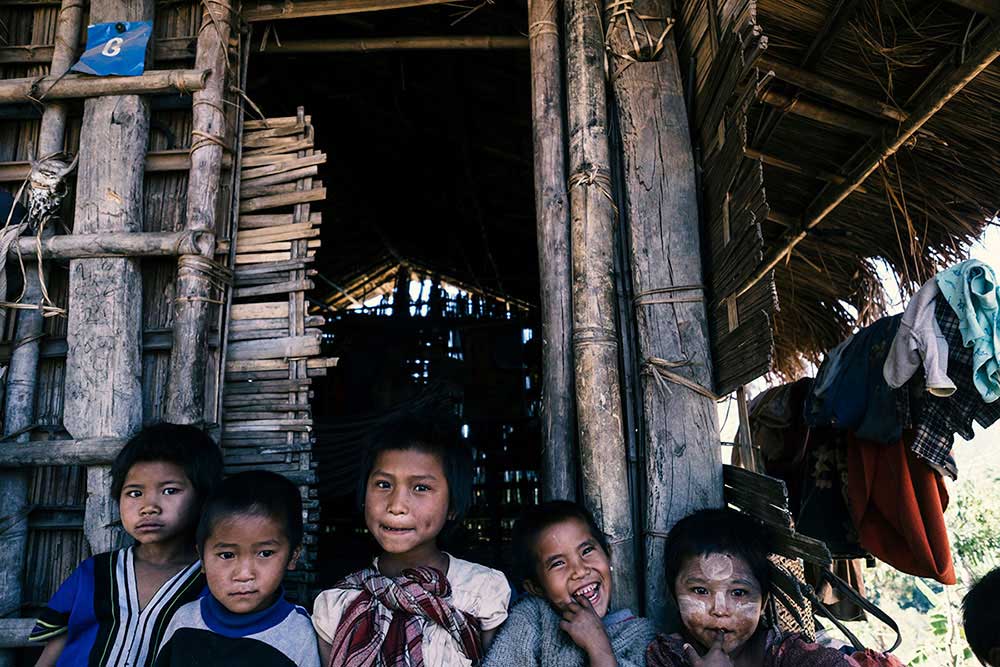
The Chin women, among which the Munn, Makan and Dine women stand out around people finding a more secluded place, serenely recognizing their notoriety, lending and improvising models for a photo. Their smile and sight lost to the wrinkles of their age, raising towards the mouth of every person belonging to the tribe, generally Munn, the Khaung Yay, fermented millet wine.
Lastly, traditional and modern competitions such as football matches, tug-of-war and the greasy pole leave behind. The participants are mostly young boys who, with a smile and inexhaustible energy, get ready in groups of four to reach «greasy pole» trying to climb the bamboo pole, previously oiled properly. It is a mental preparation for everyone who want climb.
The games did not require money and everyone could participate. The common denominator between the games of the past and those that characterize the Chin Festival is to encourage socialization and being together even for different age groups. It is an evident good that after 70 years a Festival of this caliber can connect all the local tribes, all the ethnic groups coming from all over Burma, with their customs, religions and traditions, and at the same time draws the attention of people from every part of the world with the sole purpose of enhancing the true values of life, those same values as mutual love, sharing of time and respect for others. Values that here in Mindat do not bear the weight of time but rather enrich them.
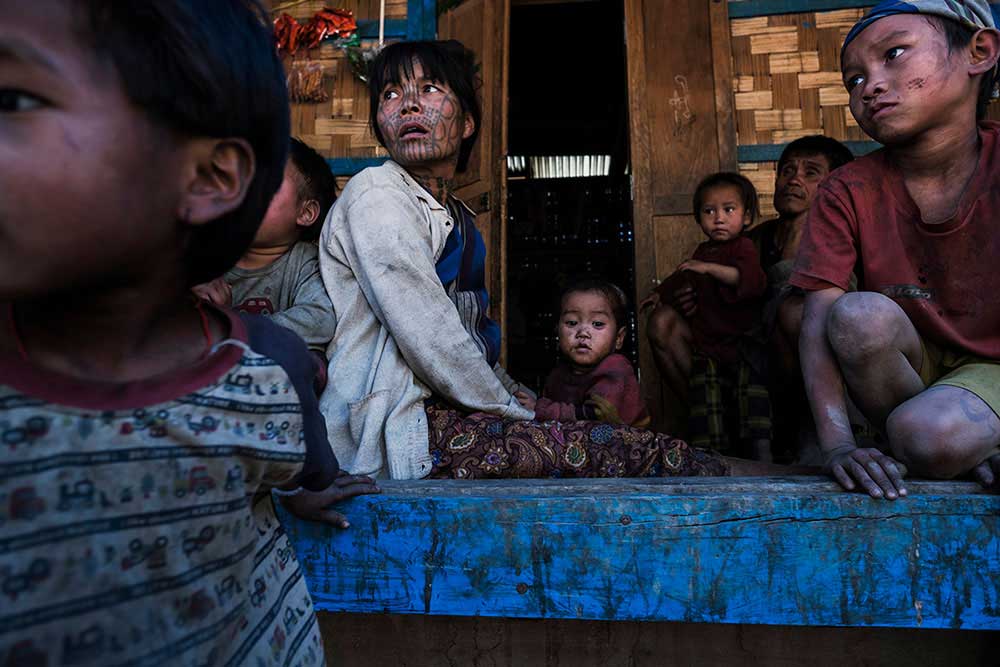
About Matteo Maimone
Matteo Maimone was born in Italy, on September 14, 1990 where he completed his studies. In 2009 he dedicated himself to photography. As a keen observer of daily life, he intends photography as a research, an introspection, through which he tells in a personal way cultural and social realities of his own country and more. That’s all thanks to photographer’s influences like Eugene Smith, James Nachtwey and finally Robert Frank. Matteo is able to create a versatile and original style embracing documentary photography.
At the moment he lives and works in Australia, running his project Nutshell Travel – a journey around the world chasing down stories – as a freelance photographer. Since 2017 he has been documenting a long term project about the daily life and social facts in many parts of Asia. He has been published in Dolce Vita Magazine, Erodoto108, The Trip Mag, QcodeMagazine, Wtness Journal, Positive Magazine and others. [Official Website]
